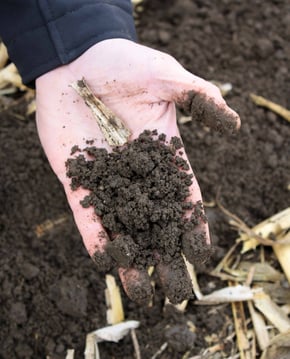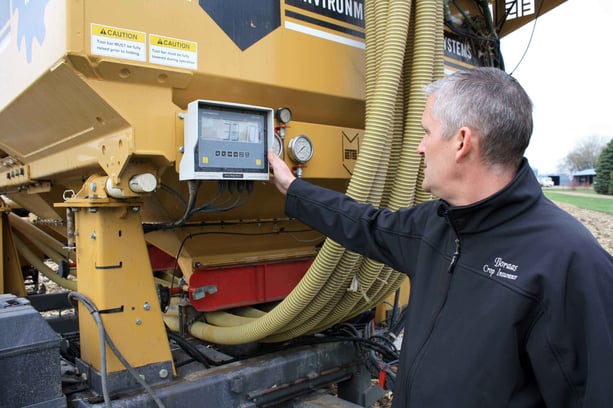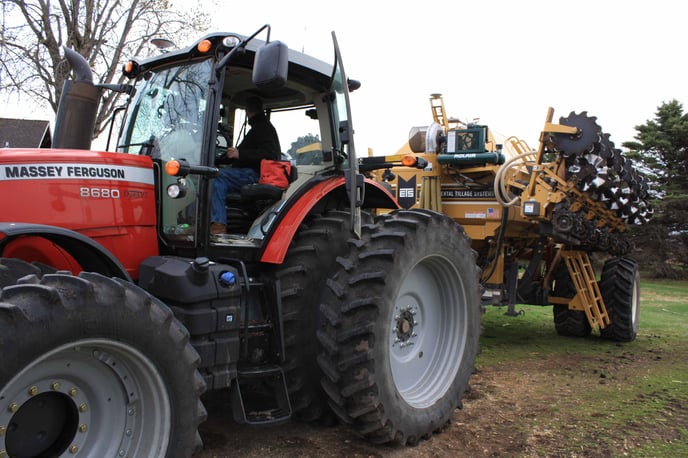This blog is part of a podcast series following one Minnesota farmer through a season of strip-till. Listen to the full audio episode by scrolling to the bottomof the page.

With the May sun shining brightly, Ed Hegland’s 16-row White planter easily carved through the soil on his farm near Appleton, Minnesota.
For the past three seasons, Hegland has zone-tilled all of his corn and soybean acres. This morning he planted soybeans into strips tilled days earlier with a SoilWarrior. Despite dry conditions last fall and a spring with only spotty rains, Hegland dug his fingers into the dirt to reveal that his newly-planted soybeans were in moist soil.
Fortunately for him, it wasn’t a major problem. Even though his SoilWarrior N can be equipped with both deep -running shanks or shallower-tilling coulters, Ed’s soils allow him to use just coulters for both spring and fall passes.
“I can sink the 8-wave coulter down just about to the hub, so I’m really getting about 8 inches deep and loosening up about a 6 to 8 inch wide strip,” Hegland says.
Hegland’s spring setup is fairly simple. Even after not being able to do maintenance on the SoilWarrior before putting it away in the fall, all his spring preparations involved was tightening a few bolts, greasing and checking hubs for oil. Then it was out into the fields to start his next season.
Because Hegland has been doing zone-till farming for several years, his strips and other important information are already loaded into his guidance system. Once it’s time for spring field work to begin, he’s ready to go and can dive headlong into the process.

In addition to fall fertilization, Hegland adds fertilizer in the spring. Working with a crop consultant and soil sample data, he utilizes variable rate technology to precisely control his nutrient delivery.
“That’s been the fun part about going to variable rate,” he says, “my overall amount per field has not changed much, but the applied amount on the acre that has higher productive value has increased. On the different soil types, different areas of the field that aren’t very productive, I don’t apply that much if I don’t have the yield potential there.”
Hegland’s SoilWarrior also comes with a steerable hitch, so it’s not just the tractor being guided by satellite technology. This allows the fertilizer to track precisely with the tilled zones both on curvy fields and those with steep hills and side hills.
Hegland started his spring tillage in mid-April. Thanks to dry conditions, he should be able to wrap up all of his tillage and planting in about a month. Because he only makes one pass with the SoilWarrior in the spring and follows that up with his planter, the time and fuel Hegland invests in spring tillage is minimal.
“I’ve made the tradeoff, I’m able to do my 1,800 acres myself with one tractor,” Hegland says. “I still make it to track meets and baseball games. It’s definitely worth doing in my mind.”

While most of his corn and soybeans were planted into moist soil, much of Minnesota is under moderate drought conditions. The biggest thing impacting Hegland’s productivity this year could be weather-related. Spring rains will play an important role in determining the success of this Season of Strip-Till.